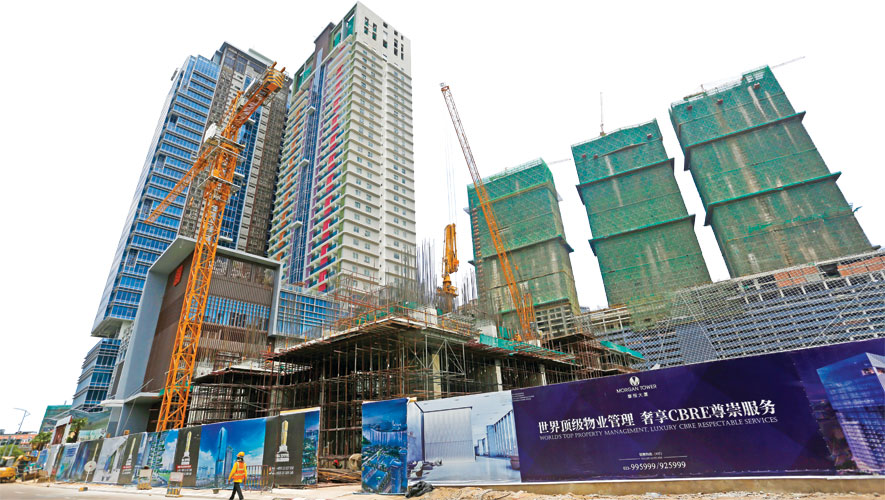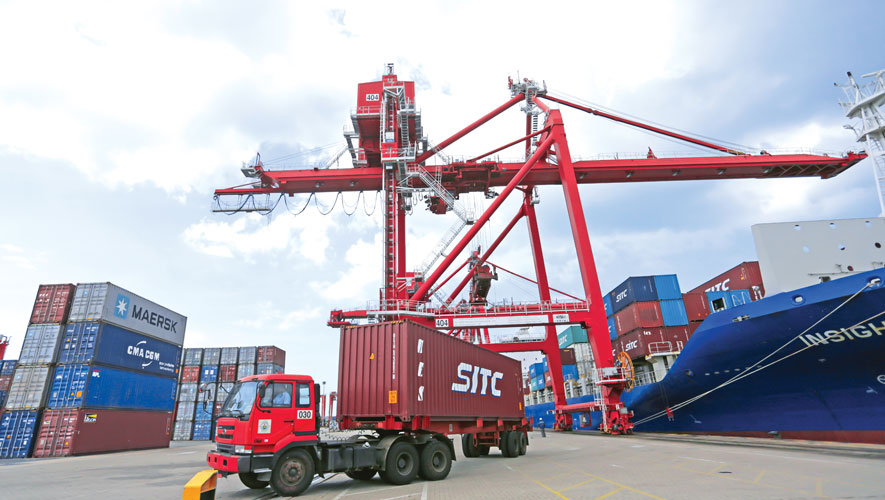2019 was a year of further progress for the Kingdom. With a booming real estate sector, the country’s growth is evident through the increase in foreign investments and with its business sectors expanding rapidly.
For the latest Cambodian Business news, visit Khmer Times Business
The country has certainly made an impression on its counterparts in the region and beyond with its steady gross domestic product (GDP) growth and increase in investment resulting in rapid development in Phnom Penh and Sihanoukville – with neighbouring provinces slowly experiencing economic benefits as well.
Economic growth is expected to remain robust in 2019, preserving its steady GDP growth over the last decade, expanding by 7.1 percent this year according to the National Bank of Cambodia (although other authoritative institutions predict a lower 6.8 percent rise). The Central Bank reported in the middle of last year that the economic growth of 2019 will continue to be supported by the steady performance of exports as well as from the construction, real estate and tourism sectors.
The industrial sector’s contribution to the GDP had grown by 36.4 percent while the service sector had contributed around 39 percent. The bank also had stated that the Kingdom’s imports and exports together had reached a value of $17.3 billion in the first half of the year with exports valued at $6.8 billion and imports reaching $10.5 billion.
A concluding report by the International Monetary Fund took a similar stance on economic growth, further adding that the private sector credit, concentrating in the real-estate and construction sectors, accelerated and was expected to grow at 28 percent in 2019.
An updated World Bank report showcased key findings that Cambodia had achieved a better-than-expected export performance. However, heightened trade also came with intensified risks.
Downside risks
Some of the downside risks include the erosion of export competitiveness, a potential slowdown in China and an overextended financial sector, associated with banks’ exposure to construction and real estate. Furthermore, cutting production and trade costs could help to mitigate the impact of the Everything But Arms (EBA) trade deal suspension, with a decision due next month, the report says.
However, following a preliminary report from the European Commission on the Everything But Arms status, Cambodia’s economic outlook might face risks if there is a definite suspension of the preferential trade access.
The garment industry is expected to take a heavy blow if the withdrawal process goes through, affecting more than 4 million people and resulting in large job losses, according to the Garment Manufacturers Association of Cambodia (GMAC). A withdrawal is also expected to appear as a big economic loss for the country because the Kingdom’s exports to the European Union last year amounted to $5.8 billion.
Following news of a possible withdrawal, Prime Minister Hun Sen had announced that $3 billion has been reserved for fiscal stimulus to cope with the potential slowdown as well as plans to increase revenue raised from taxation, customs and excise by more than 20 percent in the coming year.
Attracting investment
An energy crisis has been a present problem globally with some countries taking measures to tackle the challenge while others refuse to acknowledge it. Cambodia for one has played an important role by prioritising the incorporation of cleaner energy.
In 2019, the government announced that it would focus on prioritising renewable energy development rather than hydroelectric power, thus no hydropower plants would be built along the Mekong River.
Solar power is expected to make up 15 percent of the Kingdom’s energy production in the coming year, with solar farms estimated to produce at least 390 megawatts (MW) a year. Cambodia has long been hit by a shortage of power, prompting the government to come up with solutions to tackle the crisis, resulting in a host of solar energy projects being approved in early 2019.
According to the Electricite du Cambodge (EDC) , 50 percent of energy comes from hydropower dams, with another 30 percent coming from coal-fired facilities. A recent move from the government showed there is a higher priority in integrating green energy into the country’s economic development strategy.
Energy demand in the country had risen by 50 percent in the first half of the year with Cambodia consuming 2,650MW, a 15 percent increase compared with 2018.
EDC Director-General Keo Rattanak says that Cambodia will see a boost in investment in solar power by 12 percent by the end of 2020 and up to 20 percent in the coming three years. Adding to the progress, the Asian Development Bank (ADB) approved a $7.64 million loan to support the construction of a 100MW solar power park in Cambodia.
Singapore-based renewable company Cleantech Solar in 2019 ran a trial in the country with the installation of a 9.8 MW solar installation that includes 2.8MW of floating photovoltaics that will soon power Cambodian cement manufacturer Chip Mong Insee Cement Corp (CMIC).
Another project that is in the works is the country’s first wind energy. Singapore-based The Blue Circle Pte Ltd held discussions with the government to build a wind park in Kampot province. The company has recently completed feasibility studies on projects in Mondulkiri as well.
With plans to build at least 10 turbines in Kampot’s Bokor Mountain, the project is expected to produce up to 80MW. Director-General for the Ministry of Mines and Energy Victor Jona told Capital Cambodia that a meeting that took place on Nov 19 between the Ministry and The Blue Circle was productive because the ministry has approved the project.
Pivotal year
Bridget McIntosh, EnergyLab country director says 2019 was a pivotal year for renewable energy in Cambodia. The Kingdom started the year with 10MW of grid scale solar and wind and ended with 410MW solar and 80MW of wind either built or approved.
Looking to the future, Cambodia, like Vietnam and Thailand, will work to balance their system so they can take on as much cheap solar and wind as possible, she says. McIntosh stresses that this will require good planning and analysis because now is a crucial turning point for energy decision makers.
“While the economy is booming cheaper electricity is essential and no one wants to be stuck with an expensive 30-year contract for oil, coal or gas fired power station that doesn’t at least enable more of the cheap renewable options,” McIntosh says.
“We would also like to see the REEs – rural energy enterprises – to be allowed to incorporate a small percentage of solar (say 10-20 percent) on their grid to lower costs and improve reliability for rural customers,” she added.
New home for businesses
As trade relationships between the Kingdom and others improve, the business environment in Cambodia has steadily attracted businesses to set up base here. US Ambassador Patrick Murphy stated in a meeting with Minister of Commerce Pan Sorasak that US company General Electrics for instance has expressed its intention to invest in Cambodia’s energy sector.
Business chambers such as the American Chamber of Commerce (AmCham) and the Canadian Chamber of Commerce (CanCham) have lobbied for more businesses from the US and Canada to penetrate the Cambodian markets.
“There has been a lot more outreach with the Royal Government of Cambodia this year [2019]. We had session meetings with the parliament to build a stronger relationship with the government,” AmCham Chairman Allen Tan says.
China’s largest telecoms operator, China Unicom expanded into the Kingdom late in 2019 to build optical telecommunication pathways in the nation as part of the Belt and Road Initiative (BRI).
Current CanCham President Frederic Proulx says there is still room for more businesses from Canada to make a presence in Cambodia while there is an increasing number of businesses from Canada that have established themselves, including the likes of ABA Bank, Manulife and Reitman.
While 2019 saw policies put in place to benefit businesses in certain sectors, the government is in talks with several parties to come up with further plans that would help with business diversification projects.




